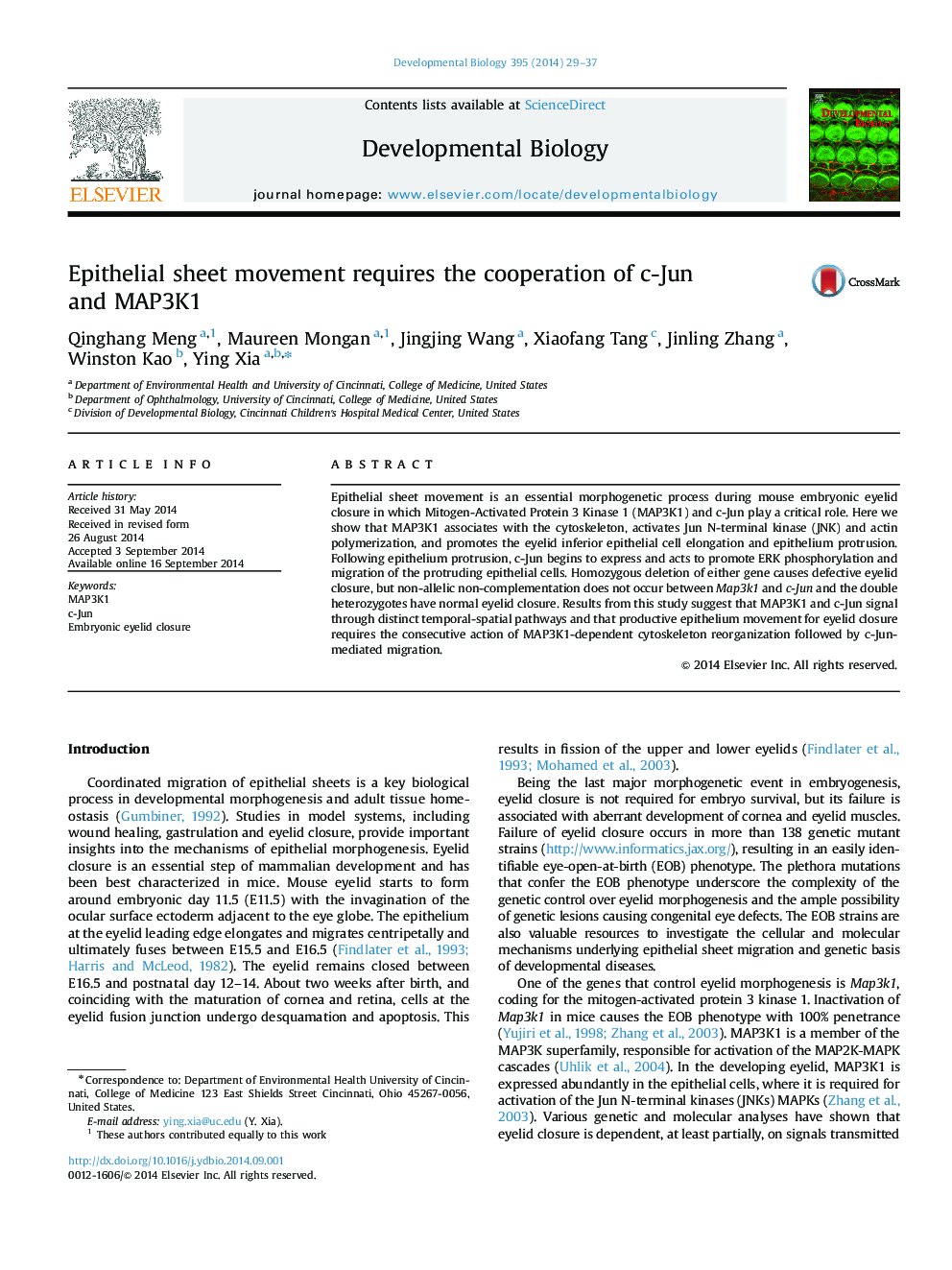| Article ID | Journal | Published Year | Pages | File Type |
|---|---|---|---|---|
| 2172929 | Developmental Biology | 2014 | 9 Pages |
•loss of c-Jun and MAP3K1 result in defective eyelid closure in embryogenesis.•MAP3K1 promotes actin polymerization and initiation of eyelid closure.•c-Jun is effective after the eyelid closure process is initiated.•MAP3K1 and c-Jun are independent of each other for expression.•c-Jun and MAP3K1 represent parallel pathways in the control of eyelid closure.
Epithelial sheet movement is an essential morphogenetic process during mouse embryonic eyelid closure in which Mitogen-Activated Protein 3 Kinase 1 (MAP3K1) and c-Jun play a critical role. Here we show that MAP3K1 associates with the cytoskeleton, activates Jun N-terminal kinase (JNK) and actin polymerization, and promotes the eyelid inferior epithelial cell elongation and epithelium protrusion. Following epithelium protrusion, c-Jun begins to express and acts to promote ERK phosphorylation and migration of the protruding epithelial cells. Homozygous deletion of either gene causes defective eyelid closure, but non-allelic non-complementation does not occur between Map3k1 and c-Jun and the double heterozygotes have normal eyelid closure. Results from this study suggest that MAP3K1 and c-Jun signal through distinct temporal-spatial pathways and that productive epithelium movement for eyelid closure requires the consecutive action of MAP3K1-dependent cytoskeleton reorganization followed by c-Jun-mediated migration.
Graphical abstractFigure optionsDownload full-size imageDownload high-quality image (177 K)Download as PowerPoint slide
